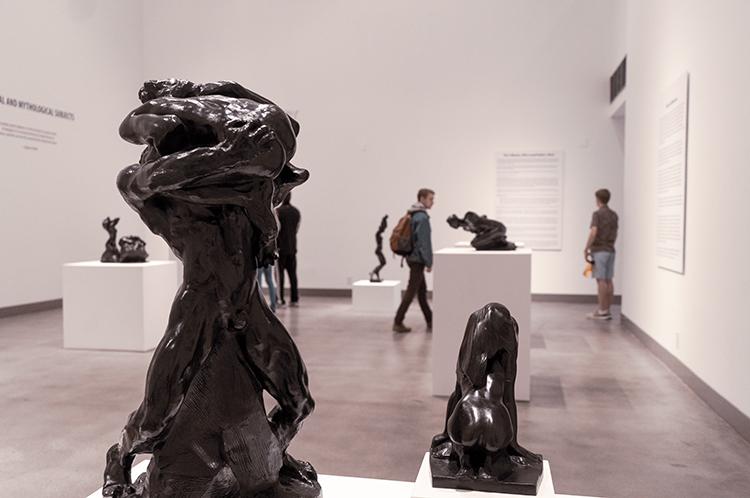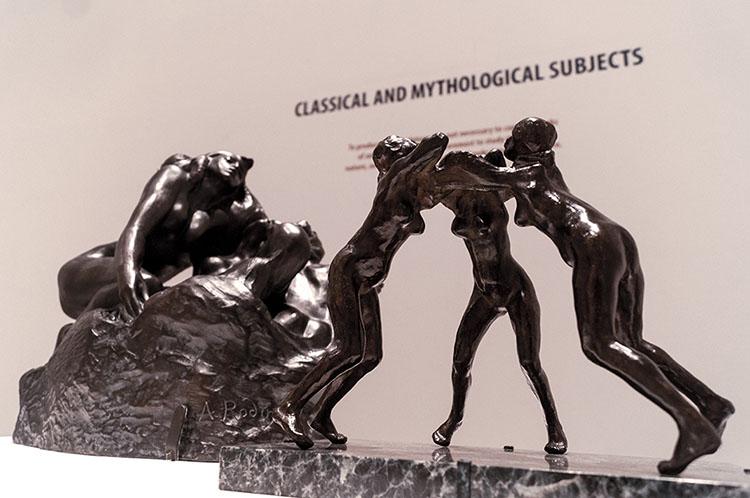The Rodin and Women exhibit in the Weisman Museum opened to the public on Jan. 18, and will remain open until March 29. The impressive collection was the last exhibition curated by former Museum Director Michael Zakian, who passed away last month.
Photos by Savannah Welch
Since its installment in early January, French sculptor Auguste Rodin‘s collection has drawn students, faculty and community members to the Weisman Museum.
“We’re really, really lucky to have something so renowned here,” said junior Art major Emily Knight, a student employee at the Weisman. “[These pieces], they’re insanely sought after in other museums.”
The exhibition, titled “Rodin and Women: Muses, Sirens, Lovers,” contains 40 bronze sculptures that focus on emotion through the female form. The collection of Rodin’s work, which depicts women as artistic inspiration, was the last Pepperdine exhibition curated by former Museum Director Michael Zakian, who died last month.

Managing Director of the Center for the Arts Rebecca Carson said before his death in January, Zakian worked for two years with the Cantor Foundation to acquire Rodin’s pieces for Pepperdine’s own showcase.
“There are a lot of people at the Center for the Arts that really went above and beyond to make sure this would happen — that the exhibition would still go on,” Carson said. “[We] really wanted to make Michael proud in terms of how this was put together and be something that we all could feel good about.”
Carson said Zakian selected the layout and arrangement of the Rodin pieces. While unable to see the exhibit in its finished form, Zakian did see Rodin’s work the day it arrived at the Weisman.
“So actually his last day in the museum was the Thursday before Christmas, and it was the day that the crates arrived with the Rodin,” Carson said. “So he saw that the work was here. We didn’t have a chance to [arrange the pieces] yet. It’s life. You just don’t know.”

The Rodin exhibit, an exploration of the biblical and mythological expressions of women, also features several sculptures completed by Rodin’s assistants — and lovers. While women in the art world have not always had a voice, Rodin highlights the power and expression of femininity.
Freshman Foster Graf talked about the relevance of Rodin’s work today.
“The beautiful thing about art is the lens through which you interpret it and is constantly able to change,” Graf said. “Whatever struggles may have been faced by a particular group in the 1800s … may not match exactly what’s happening now. I think that any group will always have struggles — struggles that they’re going through, and it’s cool to highlight them and bring awareness, whatever it might be.”
Rodin’s works at the Weisman Museum will remain open to the public until March 29.
___________________
Contact Savannah Welch: savannah.welch@pepperdine.edu

